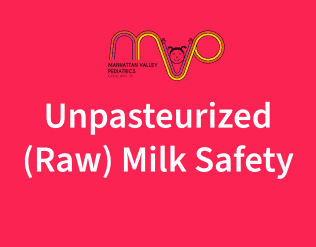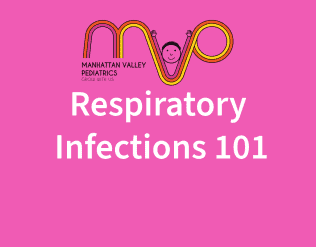A Pediatrician’s Guide to Thrush in Infants
Parents of young infants will often come to the office concerned that their baby has thrush. Because a baby’s tongue can naturally be pink, white, or even black at times, thrush can be hard for a parent to diagnose. Here is a quick overview of thrush.
What is Infant Thrush?
Thrush is a fungal infection caused by a yeast called Candida Albicans. This yeast is naturally present in everyone’s body, especially in the mouth, gut, and on the skin. However, when the balance of good bacteria is disrupted, Candida can overgrow, leading to thrush. In infants, this is most commonly seen in the mouth, but it can also affect other areas such as the diaper area or the skin folds.
What Causes Thrush in Infants?
Infants are more susceptible to thrush for several reasons:
- Immature Immune System: A baby’s immune system is still developing, making them more vulnerable to infections, including thrush.
- Exposure to Antibiotics: If the baby or the mother took antibiotics during pregnancy or while breastfeeding, this can disrupt the natural balance of bacteria and encourage yeast overgrowth.
- Breastfeeding: Thrush can spread between the baby and the mother during breastfeeding. If a baby has thrush, it can pass on to the mother’s nipples, leading to painful symptoms like itching or burning.
- Use of Pacifiers or Bottles: These items can harbor yeast if they aren’t cleaned properly, which can lead to an infection.
Signs and Symptoms of Infant Thrush
- White Patches in the Mouth: The most obvious sign is the presence of white, cottage cheese-like spots on the baby’s tongue, gums, or the roof of the mouth. These spots may not wipe away easily. If the white patches are limited to the tongue, THIS IS NOT USUALLY THRUSH.
- Fussiness or Irritability: Babies with thrush may become more irritable, especially when feeding, as the white patches can cause discomfort.
- Difficulty Feeding: Babies may refuse to feed or be fussy while nursing or bottle feeding because the infection can cause pain in their mouth.
- Cracked or Red Nipple Skin (for breastfeeding mothers): If the baby’s thrush has transferred to the mother’s breast, she may experience sore or cracked nipples.
- Diaper Rash: In some cases, Candida can also cause a diaper rash, which appears as red, angry patches in the diaper area.
How is Thrush Diagnosed?
As a pediatrician, when parents bring in a baby with suspected thrush, I begin by performing a physical exam. In most cases, thrush is easily diagnosed based on the appearance of the white patches in the mouth. Sometimes, if the diagnosis is unclear or the thrush is recurrent, I may take a sample for further testing to confirm the presence of Candida.
Treatment for Infant Thrush
The good news is that infant thrush is generally easy to treat with antifungal medications. The most common treatment options include:
- Antifungal Oral Medications: Nystatin and fluconazole are commonly prescribed antifungal medications for infants. These are usually in the form of a liquid that is applied to the inside of the baby’s mouth.
- Topical Treatments: If the thrush extends to the mother’s nipples, I may recommend topical antifungal creams like clotrimazole to help treat the infection on the skin.
In addition to antifungal medications, here are some steps parents can take to help manage thrush:
- Sterilize Feeding Items: Ensure that bottles, pacifiers, and breast pump parts are thoroughly cleaned and sterilized to prevent the yeast from spreading.
- Practice Good Hygiene: Always wash your hands before and after feeding, and wipe your baby’s mouth with a clean, damp cloth to help remove any excess yeast.
- Continue Breastfeeding: If you’re breastfeeding, it’s important to continue nursing. Just be mindful of your health, and if you experience any nipple pain or discomfort, consult your pediatrician for guidance on treatment.
Infant thrush can be concerning for new parents, but with early recognition and proper treatment, it is an easily manageable condition.




